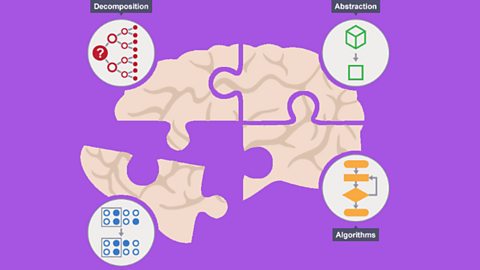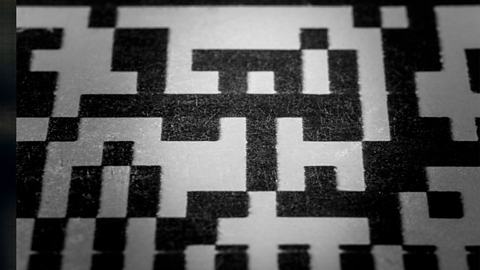Computational thinking
Introduction to computational thinking
Before computers can be used to solve a problem, the problem itself and the ways in which it could be resolved must be understood. Computational thinking techniques help with these tasks.

Decomposition
Before computers can solve a problem, the problem and the ways in which it can be resolved must be understood. Decomposition helps by breaking down complex problems into more manageable parts.

Pattern recognition
Once we have decomposed a complex problem, it helps to examine the small problems for similarities or ‘patterns’. These patterns can help us to solve complex problems more efficiently.

Abstraction
Once we have recognised patterns in our problems, we use abstraction to gather the general characteristics and to filter out of the details we do not need in order to solve our problem.

Algorithms
An algorithm is a plan, a set of step-by-step instructions to resolve a problem. In an algorithm, each instruction is identified and the order in which they should be carried out is planned.

Evaluating solutions
Before solutions can be programmed, it is important to make sure that it properly satisfies the problem, and that it does so efficiently. This is done through evaluation.

Links
- External linkExternal link
- External linkExternal link
- External linkExternal link
- External linkExternal link
- SubscriptionSubscription
- External linkExternal link
- SubscriptionSubscription